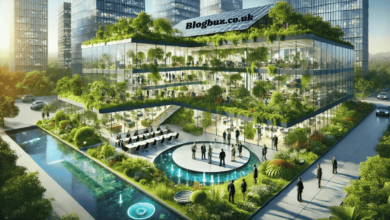Metro Manila Subway to Go Under Corinthian Village: A Game-Changer for Urban Mobility

The Metro Manila Subway is one of the most ambitious infrastructure projects in the Philippines, aimed at tackling the severe traffic congestion that has plagued the capital for decades. A key component of this massive development is the subway’s route passing under Corinthian Village, a prestigious residential enclave in Quezon City. This has sparked significant discussions among residents, urban planners, and policymakers. This article explores why the Metro Manila Subway to go under Corinthian Village is a strategic decision, the potential benefits, the concerns raised by the community, and what it means for transportation in Metro Manila.
Why the Metro Manila Subway is a Necessity
Metro Manila is infamous for its heavy traffic, with commuters spending hours stuck in congestion daily. The subway project, which spans 33 kilometres and connects Valenzuela City north to the Ninoy Aquino International Airport (NAIA) south, is designed to offer an efficient, sustainable, and modern mass transit system.
Key objectives of the Metro Manila Subway include:
- Reducing travel time across the metropolis
- Alleviating road congestion by offering a reliable alternative to private vehicles
- Promoting environmental sustainability by cutting carbon emissions
- Enhancing economic opportunities through improved accessibility
The Strategic Importance of Corinthian Village on the Subway Route
Prime Location for Connectivity
Corinthian Village, located along EDSA and Ortigas Avenue, is a well-known high-end residential community. Its strategic position near significant business hubs like Ortigas, Bonifacio Global City (BGC), and Makati makes it a vital corridor for the subway system.
Enhancing Public Transport Access
Routing the Metro Manila Subway beneath Corinthian Village ensures residents have direct access to the transit system. The nearest station, Tandang Sora Station, will allow commuters from the village to travel quickly to various parts of Metro Manila, reducing their dependence on private vehicles.
Boosting Property Values
Real estate experts predict that properties near subway stations experience higher demand and increased value. Corinthian Village, already a sought-after residential area, is expected to see further appreciation in property prices due to enhanced connectivity and accessibility.
Engineering Feats and Challenges of the Subway Beneath Corinthian Village
Advanced Tunneling Technology
Constructing a subway beneath a developed residential area requires meticulous planning. Engineers are using Tunnel Boring Machines (TBMs) to ensure minimal disruption. TBMs can excavate underground tunnels safely without causing significant surface disturbances or compromising structural integrity.
Noise and Vibration Control
Residents have expressed concerns about potential noise and vibrations from underground construction. To mitigate these issues:
- Soundproofing technologies will be implemented.
- Construction activities will follow strict schedules to minimize disruptions.
- Vibration-dampening tracks will be used in train operations to reduce noise once the subway is operational.
Traffic and Accessibility Management During Construction
As construction progresses, authorities implement traffic management plans to reduce road congestion near Corinthian Village. Key measures include detour routes, clear road signage, and community consultations.
Benefits of the Metro Manila Subway Passing Under Corinthian Village
Faster Commutes
One of the most significant advantages of the Metro Manila Subway to go under Corinthian Village is the substantial reduction in travel time. A trip from Quezon City to NAIA, which currently takes over 90 minutes, will be reduced to approximately 35 minutes.
Reduced Road Congestion
With a modern subway system, fewer people will rely on private cars, easing the traffic burden along major roads such as EDSA and Ortigas Avenue.
Economic Growth and Job Creation
Infrastructure projects like this stimulate economic growth. The subway construction generates thousands of jobs, from construction workers to engineers. Once operational, it will create employment opportunities in maintenance, security, and operations.
Environmental Sustainability
By encouraging more people to shift from private vehicles to mass transit, the subway is expected to reduce carbon emissions, contributing to a cleaner and greener Metro Manila.
Community Concerns and Government Responses
Concerns Raised by Residents
While the Metro Manila Subway project offers numerous benefits, some residents of Corinthian Village have voiced concerns:
- Noise pollution from construction and train operations
- Potential impact on the structural stability of homes and buildings
- Traffic congestion during construction
- Property ownership and legal concerns
Government’s Mitigation Strategies
To address these concerns, the Department of Transportation (DOTr) and engineers have taken several steps:
- Conducted extensive geotechnical studies to ensure safe tunnel excavation
- Implemented community consultation programs to keep residents informed
- Enforced strict construction safety measures to protect buildings above ground
- Planned well-regulated work schedules to limit construction-related disturbances
Timeline and Future Expansion Plans
Construction Progress
The Metro Manila Subway project was officially launched in 2019, and construction is ongoing. Due to its strategic importance, the Corinthian Village section is being developed with a high-priority focus.
Expected Completion
- Partial operations: 2025
- Entire operations: 2028–2029
Future Expansion Plans
Once operational, the government plans to extend and integrate the subway network with the existing MRT, LRT, and PNR systems to create a seamless public transportation experience.
Conclusion: A Transformative Step for Metro Manila
The Metro Manila Subway, which will go under Corinthian Village, represents a transformative shift in the country’s urban transportation landscape. By providing a fast, efficient, and eco-friendly alternative to road travel, this project aims to make commuting in Metro Manila more convenient and sustainable.
Despite the challenges, the subway is necessary to modernise the city’s transport infrastructure. With careful planning and execution, it has the potential to improve residents’ quality of life, boost economic development, and pave the way for future transport innovations in the Philippines.
As the subway’s construction progresses, staying informed about updates and community engagements will be crucial for residents and stakeholders. The future of Metro Manila’s urban mobility is on the rise, and Corinthian Village is at the heart of this exciting transformation.
You May Also Read: Network Addon Mod 49 Development: Enhancing SimCity 4’s Transport Networks




